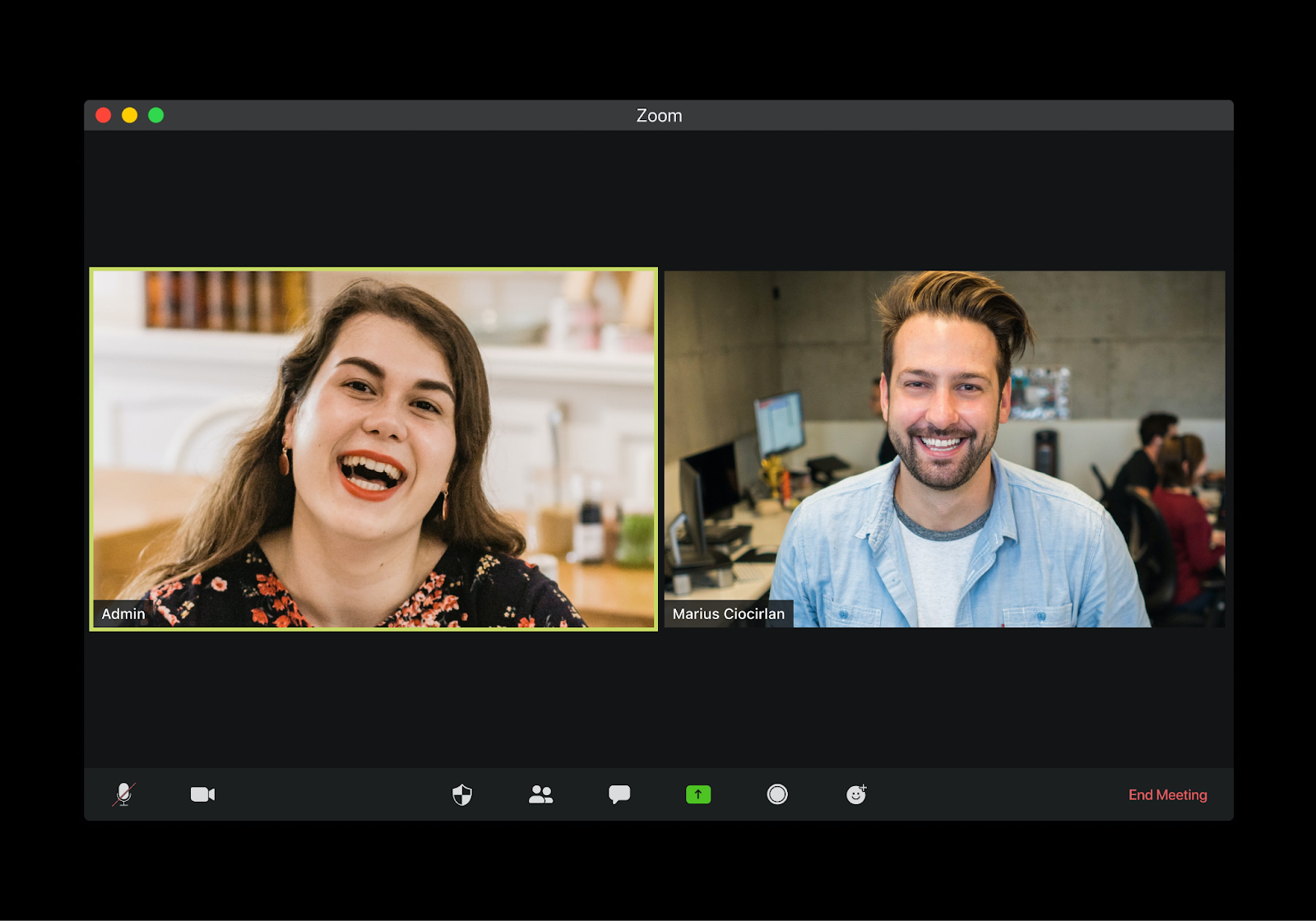With some 51% of employees working remotely, remote work is the way of the present, not the future. This means you have to get comfortable finding and hiring remote employees sooner rather than later to maintain a competitive, dynamic, and global team at your organization.
The process of hiring remote employees is, in many ways, similar to that of the traditional hiring process. However, there are key ways it differs, and these differences can significantly impact your ability to find the right candidate and keep them at your organization. To ensure it goes smoothly for you, your candidates, and your future employees, here’s what you need to know about the remote hiring process:
Determine Your Approach to Remote Work
Before you start hiring, make sure you have decided upon your company’s approach to remote work. Do you have a hybrid model, where some individuals work at a physical location and others are remote? Will certain positions be remote, while others are required to be in person? Are you testing the waters for remote work to offer more flexibility to employees? Is your company fully remote already?
No matter the answer, it’s important to make these decisions well before you start recruiting for remote positions. That way, you can convey that information upfront to candidates and they can make a fully informed decision about whether they should apply for that job.

Improve Your Organization’s Visibility Online
Your brand is crucial to remote hiring. Your organization should have a positive reputation that makes it an appealing place to work. Unlike traditional hiring, remote candidates haven’t driven by your offices or seen your business’s ads around town. To learn about your company, they must rely on the information they find online, making it vital for you to have an online presence.
Make sure your company website is up-to-date and that you post regularly on your social media channels. Use these avenues not to advertise your job listings, but to showcase what working at your organization is like. Use your blog, social media posts, employee testimonials, and other forms of content to share your company culture and values with the world.
Make and Share a Compelling Job Listing
With all that in mind, you can start recruiting in earnest. The job posting is, arguably, the most important recruitment tool you have available. You have to make it a great one that encourages candidates to apply.
As with a job posting for an in-person job, be as descriptive as possible. Discuss the position and its responsibilities, as well as your company as a whole. List the qualifications you’d like candidates to have, but don’t be so overbearing that you discourage potentially great candidates from applying. To compel candidates to apply, you can also touch on the perks and benefits you offer, such as flexible scheduling and paid time off.
With remote workers, you have a wider talent pool. However, with the influx of remote positions, it can be difficult to reach them. Spend some time advertising your listing on online job boards, including general ones and those specific to your field. You can also turn to social media, professional networks, and other online avenues to get the word out.
List Skills Relevant to Remote Work
In your job posting, look beyond the position at hand and consider the characteristics and qualities that make for a good remote worker. Make it clear, upfront, what skills someone needs to succeed as a remote employee at your company.
Remote work is highly popular, with 65% of employees hoping for full-time remote work in the future. However, remote work can be difficult and it isn’t the best option for everyone, even if they want to work in that environment. Looking for candidates who possess relevant remote work skills – such as being a strong communicator, highly organized, and proactive and self-motivated — can help you identify candidates who are more likely to be a good fit for your organization.

Provide Tests and Assessments
Of course, you still need to assess candidates’ knowledge and technical abilities. Ask candidates to submit their portfolios or any other relevant materials with their application. You can also do an initial screening with a short assessment to get a better idea of their skills, especially as they relate to the stated job history and previous experience in their application.
Once applications begin to come in, you give out longer, more difficult, and more detailed assessments to the most intriguing candidates. You can either have an initial interview and then offer the second assessment, or vice versa, depending on the typical cadence of your hiring process.
This second assessment can build off of the first, test another skill area relevant to the position, or even contribute to a real project your company is working on. If your assessment is a project deliverable or takes a significant amount of time to complete, you should think about providing compensation to the candidates for their time.
Conduct Interviews
Either after or during the assessment process, invite the most promising candidates to interview with you or your hiring manager. Typically, remote interviews aren’t all that different from in-person interviews; they just happen over a video call instead.
In addition to standard interview questions and questions about the position, ask the candidates about remote work. Allow them to tell you about any previous remote work experience they’ve had, challenges they have faced or expect to face, and why they want to work remotely now.
Remote work requires a significant amount of trust between you and your employees. Be on the lookout for potential warning signs that the candidate may not be ready to work remotely. Hiring is just as much about ruling out candidates who aren’t a good fit as it is finding the right person for the job.
Focus on Onboarding and Training
Once you’ve finished interviews and selected your candidate, it’s time for onboarding. Though it’s always a necessary step in the hiring process, onboarding is even more important for remote employees. After all, your new hire doesn’t have the luxury of being in an office with their coworkers where they can experience the workflow firsthand. Ensure all process documents are available to your employee to refer back to and know who to contact if they have questions.
Further, consider starting the employee’s time at your company with some kind of probationary period or trial run. Ask the employee to work with you for a few weeks, or even months, while you both determine if this is a good fit. This also allows the employee to get hands-on training in their position. At the end of the trial period, you can meet with the employee and either let them go or offer them a full-time position.

Foster Connections Between Employees
As a fully remote hire, your new employee may have a hard time meeting people over emails, instant messages, and video calls. Help them connect with their coworkers. Though your employees don’t necessarily need to become friends, they do need to be able to work together successfully.
Encourage both your new and seasoned employees to reach out and get to know each other. Look for virtual icebreakers and remote team-building activities that your employees can do together (this may even help motivate your more tenured team members, too). It may take time, but with some concentrated effort, your new hire will likely be far more comfortable with the rest of your team.
Concentrate on Retention
You’ve gone through the trouble of finding and bringing on a great remote employee, but your work isn’t done — you have to figure out how to keep them at your company. Offering competitive compensation, vacation and sick leave, and other common benefits is a good start, but you should dig a little deeper to find other perks that make employees happy to stay.
Think about additional perks and benefits, such as:
- Providing increased schedule flexibility;
- Offering professional development opportunities;
- Publicly highlighting your team’s great work;
- Sending care packages;
- Paying for remote workers’ equipment.
You know your company best, and what works for other organizations may not be the best option for you. Your employees are your most valuable asset, so try to get creative and think outside of the box when it comes to retention strategies.

Be Mindful of Relevant Laws
Throughout the recruitment, hiring, and onboarding process, be sure to follow all employment laws. With remote employees, you can hire people from all over the world. While this is beneficial, it also means you’ll be subject to the laws and regulations where your employee lives, not just those where your business is located.
These laws can impact many aspects of your business, including payroll, taxes, and benefits. It can even change your approach to offering and tracking paid time off and overtime hours. Familiarize yourself with any relevant employment laws so you don’t accidentally break any of them.
It may take some time to get used to these differences, as well as to find and refine a process that works well for you and your job candidates. Be patient, ask for feedback, and continue to experiment — remote work is here to stay, and the sooner you can make it work for your company, the better.

10 Characteristics To Look For In Remote Employees
In the current business landscape, more and more companies are offering remote work options to their employees. And while this can be a great perk for many workers, it’s not always the right fit for everyone.
If you’re considering hiring a remote employee, there are a few things you should keep in mind in order to set them (and yourself) up for success. Here are 10 things to look for when hiring remote employees:
1. Communication skills
One of the most important things to look for in a remote employee is strong communication skills. Since you won’t be in the same office, it’s key that your remote employees are able to effectively communicate via email, phone, and video conferencing.
For remote workers, written communication is often the primary form of communication, so it’s important that they are able to express themselves clearly and concisely in writing. In order to judge employees’ writing skills, you can give them a writing test or ask for writing samples as part of the interview process.
2. Self-motivation
Another important trait to look for in remote employees is self-motivation. Unlike office workers who are surrounded by their colleagues and have set hours, remote employees need to be able to motivate themselves to stay on task and get work done.
To gauge an employee’s level of self-motivation, ask them about a time when they had to work on a project independently. You can also ask them how they stay organized and motivated when working from home.
3. Time management skills
With remote employees, it’s especially important to make sure that they have strong time management skills. Since they won’t have set office hours, it will be up to them to manage their time effectively in order to get their work done.
In an interview setting, you could ask them about a time when they had to juggle multiple deadlines, or ask them how they plan and structure their workdays.

4. Independence
Another key trait of successful remote employees is independence. Unlike office workers who can rely on their colleagues for help, remote employees need to be able to work independently and solve problems on their own.
You could judge an employee’s level of independence by asking them about a time when they had to figure out a solution to a problem on their own.
5. Organizational skills
Strong organizational skills are a priceless trait for remote employees. Since remote workers need to be able to keep track of their work without the help of an office, it’s key that they are organized and can stay on top of their projects.
One way to gauge an employee’s organizational skills is to ask them about a time when they had to manage multiple tasks simultaneously.
6. Flexibility
One of the benefits of working remotely is that it allows employees to be more flexible with their hours. However, this flexibility can also be a challenge for some people.
If you’re considering hiring a remote worker, it’s crucial to ensure that they are able to be flexible with their hours and adapt to different time zones.
You can check a candidate’s level of flexibility by asking them about a time when they had to work with people in different time zones, and if this is something they would be open to at a role in your firm. You can also ask them whether they prefer to work set hours or have more flexibility with their schedule.

7. Technical skills
The most obvious element to consider when hiring remote employees is their technical skills. Depending on the type of work they’ll be doing, you’ll need to make sure that they are familiar with the relevant technology and software.
For example, if they’ll be working on graphic design projects, you’ll want to make sure that they know how to use Photoshop or Illustrator.
If they’ll be working on web development projects, you’ll want to make sure that they know how to use HTML, CSS, and JavaScript.
8. Problem-solving skills
One of the most important skills for remote employees is strong problem-solving skills. Since they won’t have colleagues to ask for help, they need to be able to figure out solutions on their own.
One way to gauge an employee’s problem-solving skills is to ask them about a time when they had to solve a difficult problem. You can also ask them how they approach problems and whether they prefer to work alone or with others.
9. Collaboration skills
While remote employees need to be able to work independently, they also need to be able to collaborate effectively with their team members. For example, they might need to participate in video conferences or conference calls, or share files and documents electronically.
At an interview, you could ask a potential candidate how they prefer to communicate with others and whether they’re comfortable using video conferencing or other digital tools.
10. Cultural fit
Finally, it’s key to make sure that the remote employee is a good cultural fit for your company. Even though they won’t be working in the same physical space as the rest of your team, it’s important that their values align with your company culture.
Make sure to ask candidates about their work style and how they prefer to work. You can also ask them about their favorite thing about working remotely and whether they have any concerns about working in this new type of way.
By keeping these 10 things in mind, you’ll be able to hire the best possible remote employees for your company.

Are Remote Employees Good For Your Firm?
The remote workforce is becoming increasingly popular, with more than 3.3 million American employees working from home at least half the time, according to a Gallup poll.
There are plenty of advantages to hiring remote employees, here are a few of them in further detail:
You can tap into a global talent pool
With remote employees, businesses have access to the best talent no matter where they live. This is especially beneficial for small businesses and startups who may not be able to compete with bigger companies when it comes to salary and benefits.
Not only this, but with a bigger talent pool you can find employees who can fit very specific skillsets that may not exist within your local community. This means you can satisfy needs that simply would not be met by hiring locally.
There’s no need for office space
One of the biggest advantages of having remote employees is that there’s no need for office space. This can save businesses a lot of money in overhead costs and improve their bottom line significantly as a result.
Businesses spend a lot on office space so having more remote workers is a great cost saving mechanism to consider.
Increased productivity
Numerous studies have shown that employees who work from home are more productive than those who work in an office. This is because they have fewer distractions and can create a better work-life balance.

Improved morale
Remote employees often have increased morale because they feel trusted and empowered to work independently. This can lead to increased loyalty and lower turnover rates.
Flexibility
With remote employees, businesses have the flexibility to scale up or down as needed. This is a huge advantage during times of economic uncertainty.
While there are plenty of advantages to hiring remote employees, there are also some challenges that businesses need to be aware of. 5 of these challenges include:
Communication difficulties
It can be difficult to communicate with remote employees and manage them effectively. This is why it’s important to have clear communication channels in place from the start.
Time zone differences
If you have employees in different time zones, it can be tough to schedule meetings and deadlines. This is why it’s important to have a clear understanding of time zone differences from the start.
This can be overcome by putting the time zone in the job description.

Trust issues
It can be difficult to build trust with remote employees, especially if you’ve never worked with them before. This is why it’s important to set clear expectations and rules from the start.
Lack of face-to-face interaction
One of the biggest disadvantages of working with remote employees is the lack of face-to-face interaction. This can make it difficult to build relationships and trust among employees.
It can also mean difficulty collaborating well with your fellow colleagues, and therefore can result in a less effective team.
Technology problems
Remote employees often rely on technology to do their jobs, which can lead to technical difficulties. This is why it’s important to have a clear understanding of your company’s IT infrastructure before you start working with remote employees.
Overall, there are plenty of advantages and challenges to hiring remote employees. It’s important to weigh both sides carefully before making a decision.

Final Thoughts
If you’re considering hiring remote employees, there are a few things you need to keep in mind.
First, think about the advantages and disadvantages of working with remote employees.
Second, consider your company’s needs and whether or not working with remote employees is the right fit.
Finally, make sure you have clear communication channels and expectations in place before you start working with remote employees.
Once you have these sorted, then you can consider all the different factors associated with remote working as discussed in the first section of this article. Hopefully you now have a good understanding of hiring remote employees and can do so successfully.
